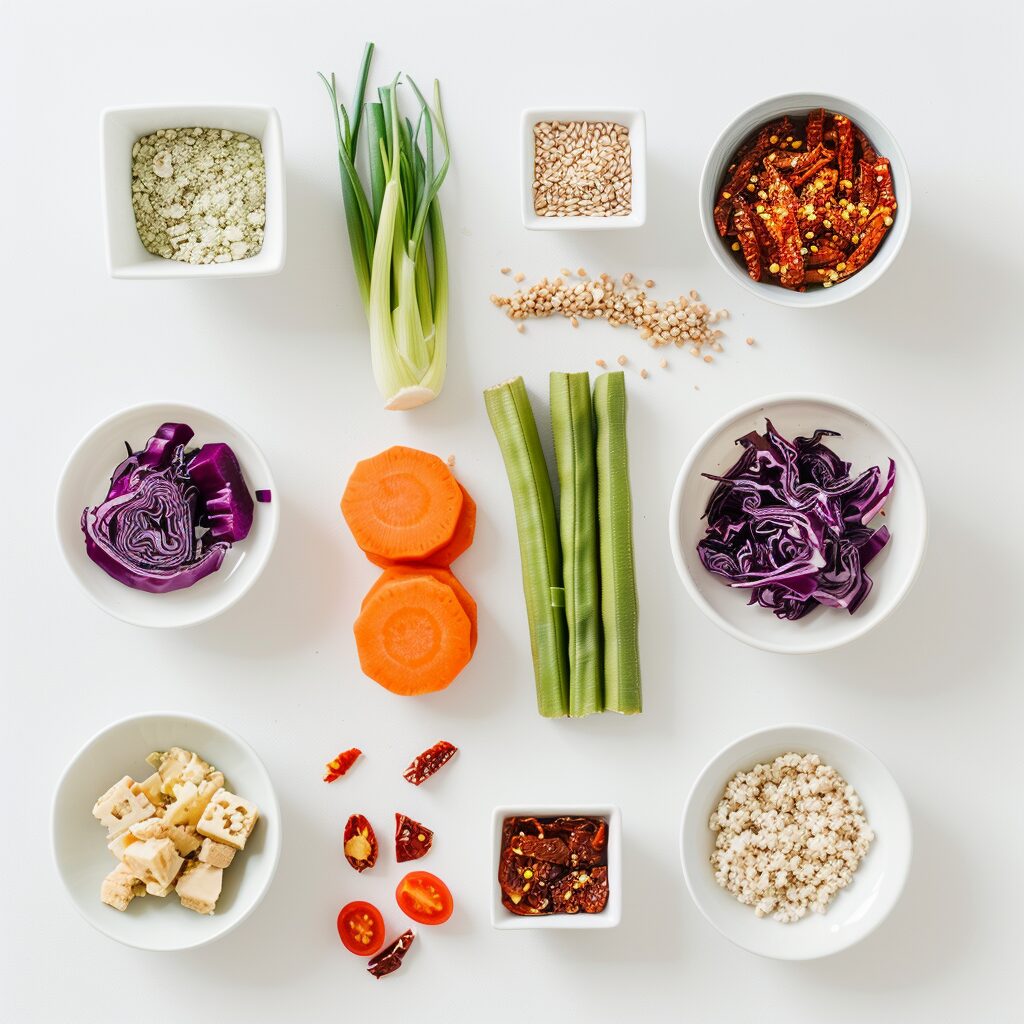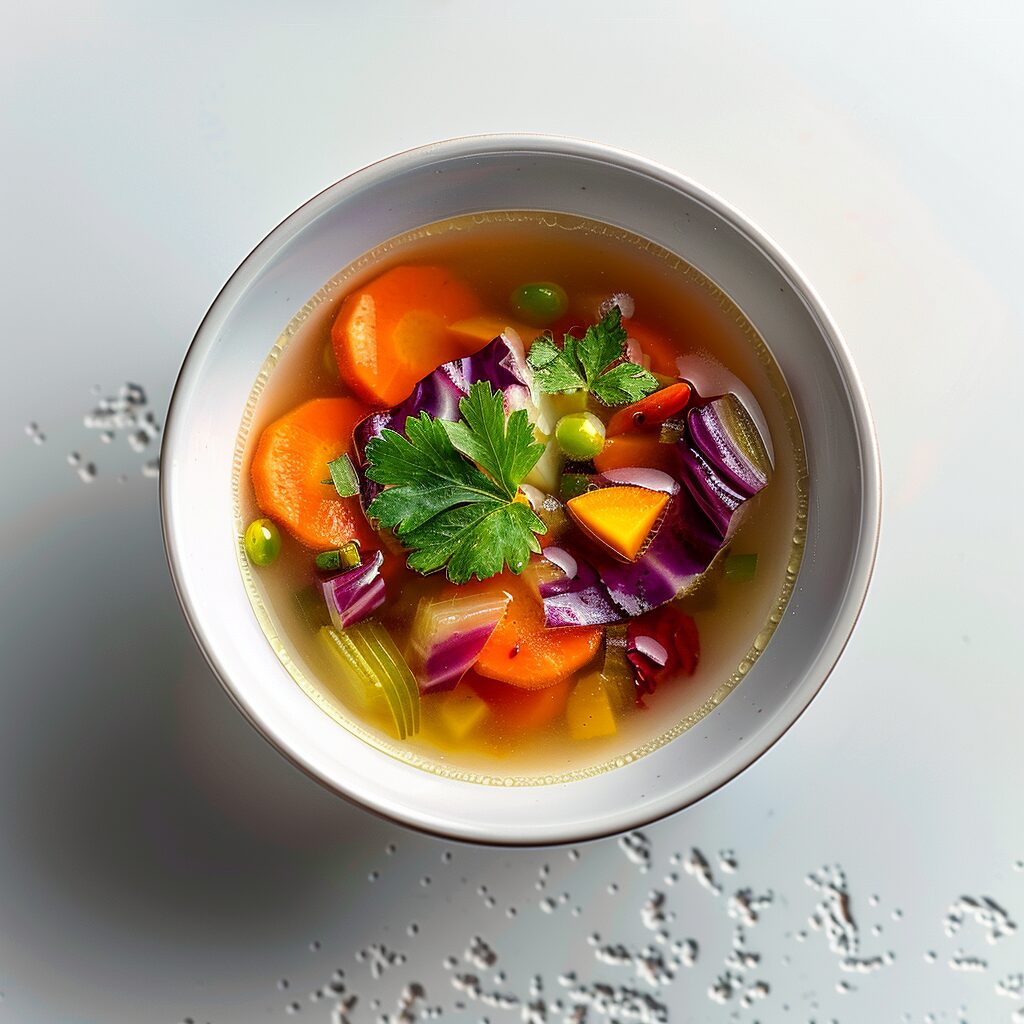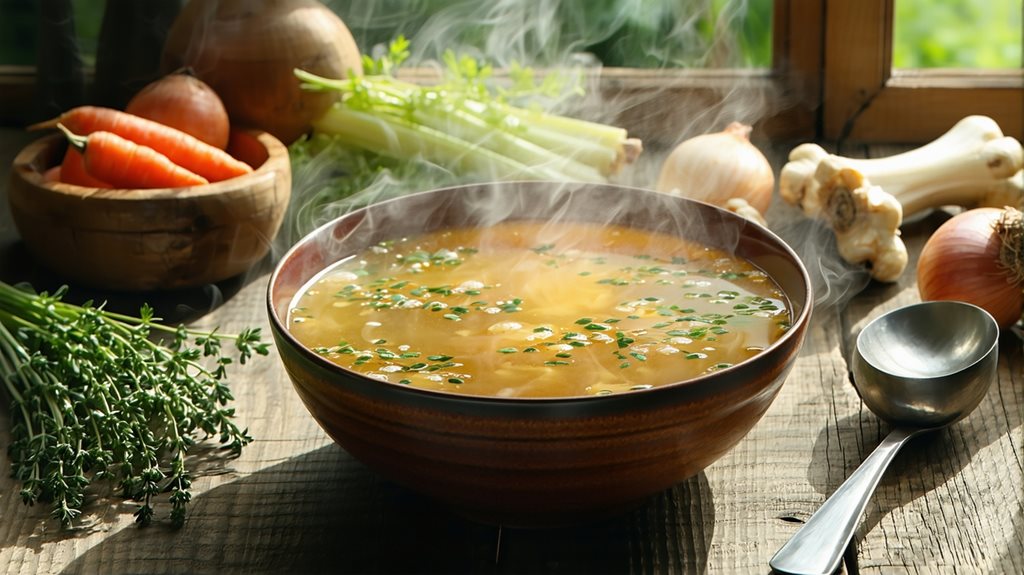Introduction
Vegetable Soup with Shiokoji is a delightful and nourishing dish that brings together a variety of fresh vegetables, hearty grains, and the unique umami flavor of shiokoji. This soup is a perfect example of how Japanese cuisine emphasizes balance and simplicity while delivering profound flavors. I first enjoyed this comforting soup during a visit to a traditional Japanese ryokan (inn), where it was served as part of a wholesome breakfast. The combination of fresh, seasonal vegetables and the savory depth of shiokoji made a lasting impression.


Cultural Context
Japanese cuisine is renowned for its seasonal ingredients and delicate flavors. Dashi, a broth made from kombu (kelp) and sometimes dried fish, is a staple in many Japanese dishes, providing a subtle umami base. Shiokoji, a fermented rice seasoning, is gaining popularity for its ability to enhance the flavors of dishes naturally. This vegetable soup incorporates these traditional elements, making it a modern yet authentic Japanese dish. It is often enjoyed during colder months or as a light, nutritious meal throughout the year.
Ingredient Spotlight
Konbu Dashi: A traditional Japanese broth made from dried kelp, offering a mild umami flavor that forms the soup’s base.
Shiokoji: A fermented seasoning made from rice malt, salt, and water, which adds a rich umami taste and enhances the flavors of the other ingredients.
Vegetables: Red cabbage, carrots, okra, and sundried tomatoes provide a variety of textures, colors, and nutrients.
Farro: An ancient grain that adds a chewy texture and is rich in fiber and protein.
Chickpeas: Provide additional protein and fiber, making the soup more filling and nutritious.
Health Benefits
This vegetable soup is packed with vitamins, minerals, and antioxidants from the fresh vegetables. Farro and chickpeas add a substantial amount of protein and fiber, promoting digestive health and keeping you full longer. Shiokoji not only enhances flavor but also supports gut health due to its fermentation process.
Cooking Tips
Vegetable Preparation: For a more robust flavor, sauté the vegetables with a bit of salt and pepper before adding the dashi. This caramelizes the vegetables, adding depth to the soup.
Consistent Texture: Slice the vegetables uniformly to ensure even cooking.
Soup Thickness: Adjust the amount of dashi based on your preference for a thicker or more soupy consistency.
Serving Suggestions
Serve the vegetable soup hot, garnished with a drizzle of extra-virgin olive oil, a sprinkle of freshly cracked black pepper or shichimi pepper, and fresh parsley. This soup pairs well with a bowl of steamed rice or a slice of crusty bread. For beverages, consider a cup of green tea or a light sake to complement the delicate flavors.


Variations
Vegetable Substitutions: Use seasonal vegetables like summer corn, daikon radish, bell peppers, celery, or fresh tomatoes.
Grain Alternatives: Substitute farro with barley, brown rice, or other whole grains.
Bean Alternatives: Replace chickpeas with other mild-tasting beans like white beans.
Conclusion
Vegetable Soup with Shiokoji is a nourishing, flavorful dish that brings the best of Japanese culinary traditions into your kitchen. Its versatility allows for endless customization, making it a perfect meal for any season. Give this recipe a try and share your experience in the comments below. I’d love to hear your thoughts and any variations you’ve made! Happy cooking!
PrintVegetable Soup with Shiokoji Recipe
A Nutritious and Flavorful Japanese-Inspired Dish. Vegetable Soup with Shiokoji is a delightful and nourishing dish that brings together a variety of fresh vegetables, hearty grains, and the unique umami flavor of shiokoji.
- Cook Time: 15-30 minutes
- Total Time: 0 hours
- Cuisine: Japanese
Ingredients
- 4 cups konbu dashi, konbu shiitake dashi, or katsuo konbu dashi
- 1/4 head red cabbage, thinly sliced
- 1/4 onion, sliced
- 1 cup carrots, chopped thinly into half-moons
- 1 cup okra, cut into 1/4 in. thick pieces
- 1/4 cup sundried tomatoes
- 1 1/2 cups chickpeas, plus 1/2 cup aquafaba (chickpea liquid)
- 1/2 cup farro
- 2 bay leaves
- 1 tsp oregano
- 2 tsp shiokoji
For serving:
Extra-virgin olive oil, parsley, freshly cracked black pepper or shichimi pepper
Instructions
- Using a dutch oven, add all the ingredients and bring to a gentle simmer.
- Cook for about 15-30 minutes until vegetables have softened.
- Serve with desired toppings, a bowl or rice and or bread and enjoy.







Konnichiwa! (Hello!) I'm Pat Tokuyama, a Japanese tofu cookbook author, who travels for music, food, and adventure. If you like Japanese tea, checkout some of the newestorganic japanese tea, matcha bowls and noren and more!
** Curious about the Plant Based Japanese Cooking Club? ** Learn more here!